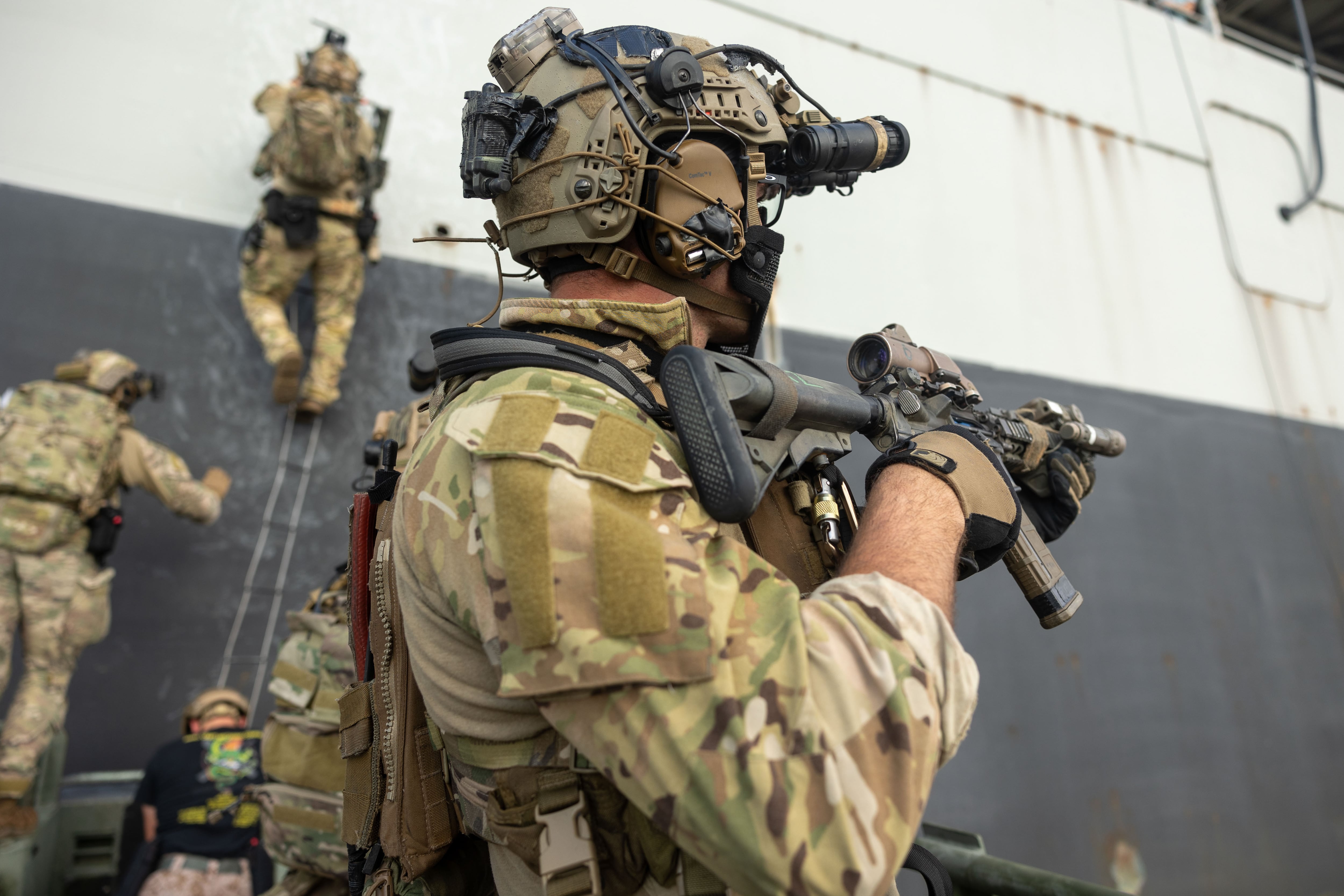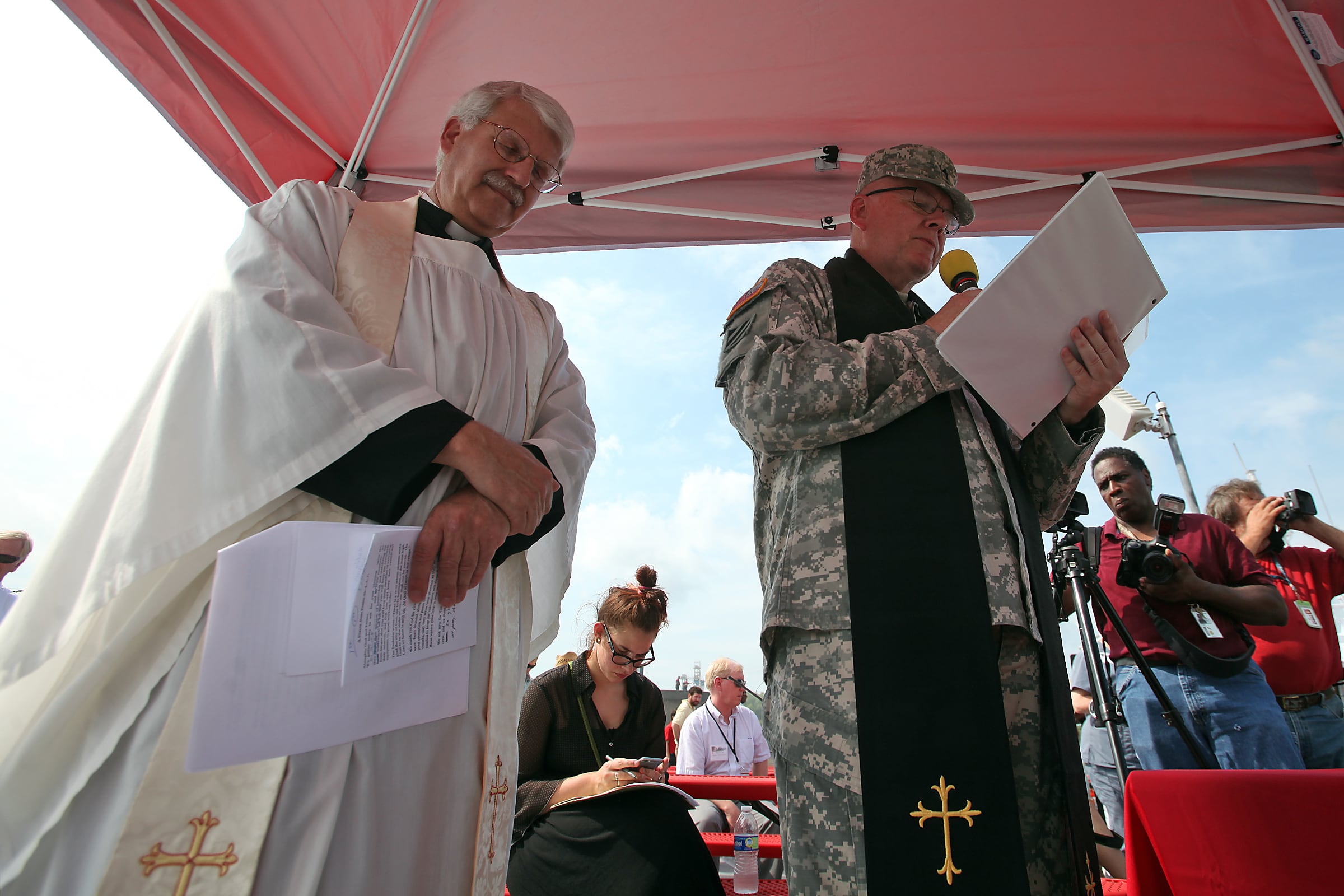The Marine Corps’ stand-in forces need to possess physical toughness and a natural inquisitiveness in order to succeed, Marine Corps Special Operations Command leaders said Tuesday at an annual defense conference.
Maj. Gen. Peter Huntley, commander of Marine Corps Special Operations Command, spoke at a Modern Day Marine panel in Washington about how a changing military landscape requires multifaceted Marine Corps Raiders who possess both a grittiness synonymous with the Marine Corps and an eagerness to learn and adapt to evolving information systems.
“It’s gonna be nasty, it’s gonna be brutish, it’s still gonna take tough, rugged people,” Huntley said of what the global military landscape requires of the Marine Corps Raider.
But he said that environment would also drive the need for MARSOC personnel with the cognitive ability to adapt to new technologies and the desire to adapt.
Marine Corps stand-in forces, outlined in the Marine Corps’ plan to prepare for future conflicts, dubbed Force Design, are defined as small but lethal forces designed to operate within a contested area and disrupt the plans of an adversary.
MARSOC fits the definition.
The proliferation of unmanned defense systems and adversarial technological advancements, as observed in the Russia-Ukraine war, has served as a driving factor for MARSOC’s modernization efforts, which have included acquiring leading defense technologies and recruiting physically tough, naturally curious Marines, leaders said at Tuesday’s panel.
Col. Shane Edwards of MARSOC G-8, who also spoke at the panel, said MARSOC’s current fleet of technologies includes unmanned surface and underwater vessels and more than 45 aerial drones.
He said artificial intelligence and small robotics, especially first-person view drones, are the biggest game changers for MARSOC.
These systems are pivotal for contested environments in which adversaries are ramping up their own modernization efforts and eclipsing the sophistication of their previous systems.
“We’re going up against enemies that have way better tech,” Edwards said.
Panelists reiterated that a military landscape evolving at breakneck speed doesn’t alter the basic necessity for exemplary Marines.
RELATED

What makes MARSOC unique, Huntley said, is that their personnel are constantly deployed forward, providing Raiders the opportunity to consistently set the theater for partner forces and be a key solver of problem sites.
“It allows us to do the things that are uniquely SOF [special operations forces],” Huntley said. “Whether it’s to help our partners fend off aggression by adversaries or to set conditions.”
That way, he said, if conflict does potentially arise, the Raiders will be prepared. They wouldn’t be starting on game day, because they will have done their homework.
Panelists said MARSOC aims to support joint forces by providing information to help them achieve their objectives. In order to do that, the component is leveraging new technologies to provide Marine Corps Raiders with as much valuable information as possible.
MARSOC is experimenting with unmanned systems — autonomous and semi-autonomous — that possess an increased range of movement that would allow MARSOC to navigate larger geographical swaths, Huntley said.
Those might include surface maritime types of platforms that could travel long distances from shore to sea, or airborne ones as well, he said.
Editor’s note: This story has been updated to correct a quote from Maj. Gen. Peter Huntley.
Riley Ceder is a reporter at Military Times, where he covers breaking news, criminal justice, investigations, and cyber. He previously worked as an investigative practicum student at The Washington Post, where he contributed to the Abused by the Badge investigation.





